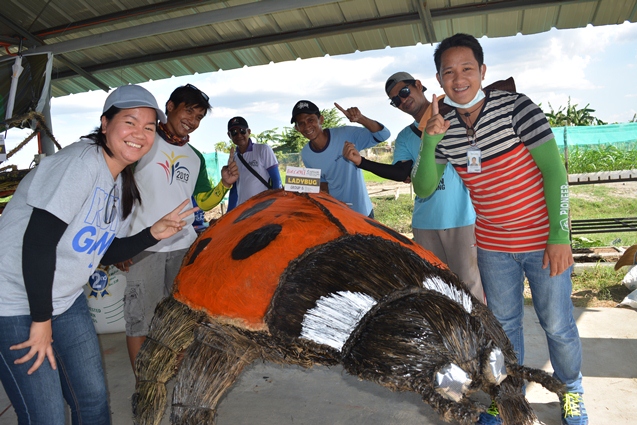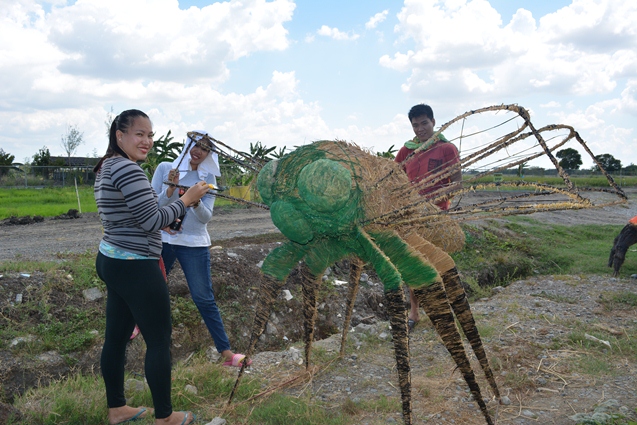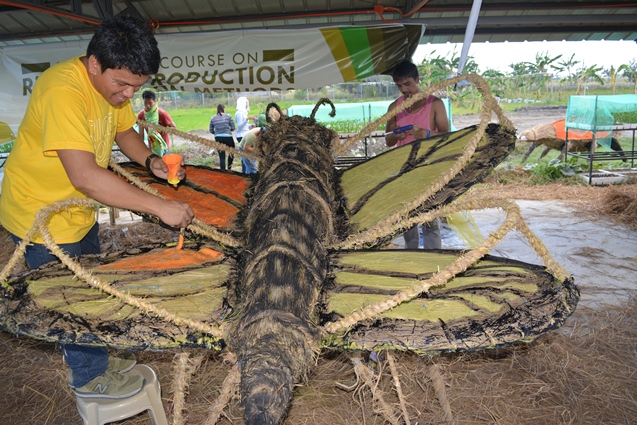Maligaya, Science City of Muñoz – PhilRice’s FutureRice program organized a Dayami Festival, an art competition to help strengthen the Institute’s campaign against the burning of rice straw, May 9.
“Through this competition, we hope to encourage farmers not to burn rice straw, promote awareness on its effects to the environment, and teach them about the environment-friendly alternatives,” says Marian Rikka Añora, PhilRice researcher and organizer of the event.
Burning of rice straws, generally practiced during the harvest season, causes air pollutants such as carbon dioxide, carbon monoxide, nitrogen oxide, and sulphur dioxide. If continually done, it will decrease soil’s nitrogen, 25% of phosphorus, 20% of potassium, and 5-60% of sulfur.
This is in support to the Solid Waste Management Act (RA 9003) and Philippine Clean Air Act of 1999 prohibit open-field burning, including burning of rice straws.
Meanwhile, six teams of PhilRice staff members, students from Central Luzon State University, and locals from Brgy. Maligaya participated in the event. The participants creatively covered art frames of beneficial insects in the rice field and popular movie characters using rice straw.
Winners of the competition took home sacks of milled and brown rice. The entries were judged based on creativity, cleanliness, and teamwork.
Smart Alternatives
“Aside from using rice straws as artworks, farmers can also use it as organic fertilizer and primary material for mushroom production,” Añora adds.
According to experts, rice straw and other biomass from farm by-products can help farmers save expenses from chemical fertilizer inputs. Recycling farm wastes can also keep the environment clean and free of pollutants.
“When straws are scattered in the field during land preparation, they maintain soil’s nutrients and moisture,” says Evelyn Javier of Agronomy, Soil, and Plant Physiology Division.
Javier adds that every five tons of rice straws can increase soil’s nutrients such as nitrogen, phosphorus, potassium, sulfur, silicon, and carbon. They also preserve the biodiversity of microorganisms that helps in nutrient cycling and efficient fertilizer utilization.
Meanwhile, Rizal Corales of PhilRice’s Palayamanan Plus recommends the use of rice straws as substrate for oyster mushroom (Pleurotus spp.) production.
“Using rice straw as mushroom substrate is economically profitable for farmers and people engaged in agribusiness. The waste from mushroom production is also the main substrate for vermicomposting, one of the best organic fertilizers produced,” Corales explains.
Ladybug by Danny O. Alfonso, Jayson Marturillas, Marian C. Redondo, and James Maynard Vino of Genetic Resources Division (GRD)
Dragonfly by Jennielyn Bautista, Lourdes Bautista, Oliver Bautista, and Mary Jane Peralta of Maligaya, Science City of Muñoz
Butterfly by Hermenigildo U. Gandeza, Val C. Garcia, Jude Klarence Pangilinan, and Sonny Boy Pangilinan of the Rice Science Musem







